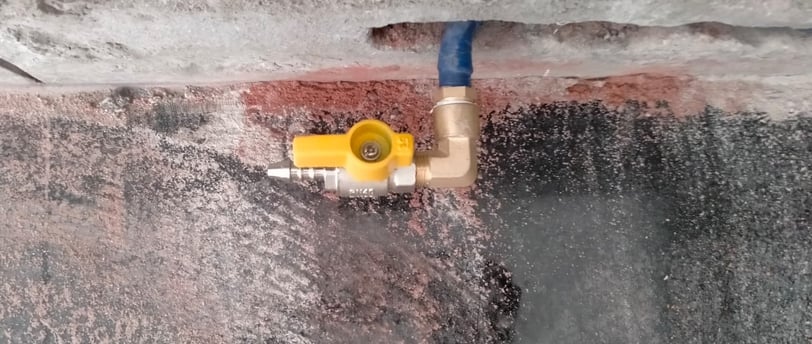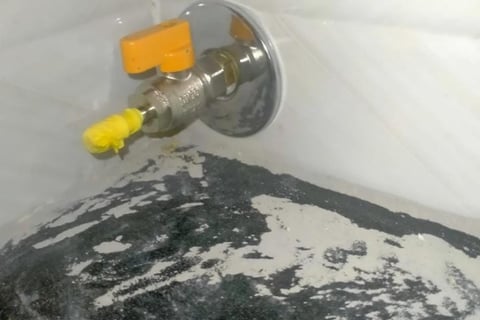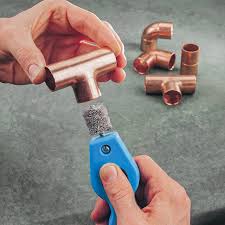How to Choose the Best Materials for Gas Pipelines
When it comes to gas pipeline installation, selecting the right materials is essential for the longevity, efficiency, and safety of your gas system.
11/13/20244 min read


When it comes to gas pipeline installation, selecting the right materials is essential for the longevity, efficiency, and safety of your gas system. Different materials offer unique benefits and may be more suitable for specific environments or applications. Whether you’re planning a new gas pipeline installation or upgrading an existing system, making an informed choice about materials can save you from costly repairs and safety issues down the line.
Here’s a comprehensive guide on choosing the best materials for gas pipelines, with expert insights on what each option offers.
1. Understanding the Importance of Material Selection
Choosing the best materials for gas pipelines is not just about durability but also about safety, cost-efficiency, and compliance with local regulations. Each material has distinct properties that make it more suitable for certain applications, climates, and gas types (natural gas or LPG). For example, while steel is known for strength, copper has better corrosion resistance, and plastic is flexible and easy to install.
A reliable gas pipeline installation service will always advise on the best materials based on your home’s unique needs, installation location, and the type of gas being used. Working with professionals ensures that you choose materials that meet safety standards and provide long-term value.
2. Common Materials Used in Gas Pipeline Installation
Let’s look at the most commonly used materials for gas pipelines and the pros and cons of each:
Copper: Copper is widely used for gas pipelines due to its corrosion resistance, flexibility, and ease of installation. It’s especially popular for indoor gas lines in residential settings. However, copper can be costly compared to other materials, so it may not always be the most economical choice for large installations. Copper’s longevity and ability to withstand high pressure make it a worthwhile investment for many homeowners.
Stainless Steel: Known for its durability and strength, stainless steel is ideal for both indoor and outdoor applications. Stainless steel pipes are highly resistant to weather and physical damage, making them suitable for areas exposed to the elements. Although it’s more expensive, stainless steel is highly durable and requires minimal maintenance, making it an excellent choice for high-demand systems.
Plastic (Polyethylene or PE): Polyethylene pipes, often referred to as PE pipes, are commonly used in underground gas distribution. Plastic pipes are lightweight, flexible, and resistant to corrosion, making them ideal for underground installations. They are cost-effective and easy to install, but they may not be suitable for high-temperature or above-ground applications, as they can degrade with exposure to sunlight.
Black Iron: Black iron pipes are a traditional choice for gas lines in older buildings and are still used today. They’re durable and relatively affordable, but they lack corrosion resistance, which can be an issue in areas with moisture or humidity. Black iron pipes are best for indoor use and require regular maintenance to prevent rust and leaks.
3. Factors to Consider When Choosing Gas Pipeline Materials
When choosing the right material for your gas pipeline, consider the following factors:
Location of Installation: If your pipeline is underground, materials like polyethylene are ideal due to their corrosion resistance and flexibility. For above-ground installations, stainless steel or copper are preferred for their strength and durability.
Gas Type: Different gases react differently with certain materials. For instance, natural gas and LPG have unique characteristics that may affect the material’s lifespan. A gas pipeline installation service can advise on which materials are most compatible with your chosen gas type.
Environmental Factors: Climate, soil conditions, and proximity to corrosive elements can affect the durability of your gas pipes. Areas with high humidity or salinity may require materials like copper or stainless steel that resist corrosion.
Cost and Budget: While some materials, like stainless steel and copper, offer longevity and performance, they come at a higher initial cost. For homeowners with a budget, balancing durability with cost-effectiveness is essential.
Safety Standards and Compliance: Make sure the materials chosen comply with local regulations and safety standards. Working with a certified gas pipeline installation service ensures that all materials used meet these requirements, protecting your home from potential hazards.
4. Pros and Cons of Each Material Type
To help you decide which material is right for your gas pipeline, here’s a closer look at the pros and cons of each type:
Material Pros Cons
Copper
Corrosion-resistant, flexible, long-lasting Higher initial cost, susceptible to theft
Stainless Steel
Extremely durable, resistant to weather Expensive, heavy, and challenging to work with
Plastic (PE)
Lightweight, corrosion-resistant, flexible Not suitable for above-ground or high-temperature applications
Black Iron
Affordable, durable indoors Corrodes easily, requires regular maintenance
5. Seeking Professional Guidance
Choosing the right material for your gas pipeline is not a decision to be made lightly. Consulting with a gas pipeline installation service can help you navigate the choices and select the material that best fits your needs, budget, and location. Professionals are trained to assess your home’s specific conditions and recommend materials that will ensure safety, efficiency, and durability for years to come.
6. Long-Term Benefits of the Right Material Choice
Investing in the right material at the start of your installation can save you from expensive repairs, replacements, and safety risks. Materials like copper and stainless steel, though initially more expensive, can offer substantial long-term savings due to their low maintenance and high durability.
Selecting the right materials also enhances the energy efficiency of your gas system. Quality materials ensure a secure and tight seal, reducing the likelihood of leaks and maximizing gas flow. This not only keeps your family safe but can also lead to lower energy bills.
7. Conclusion: Invest in Quality and Safety
In the end, the best material for your gas pipeline depends on various factors, including your installation location, gas type, environmental conditions, and budget. Working with a knowledgeable gas pipeline installation service ensures that you make an informed choice that prioritizes safety, efficiency, and longevity.
Whether you choose copper, stainless steel, plastic, or black iron, each material has its strengths and limitations. With professional guidance and careful consideration, you can select the material that best supports a safe, efficient, and long-lasting gas pipeline system in your home.
Choosing the best material is an investment in your home’s safety and energy efficiency, so consider your options carefully and always seek expert advice to achieve the best outcome.




Contact US Today:
Email: info@vaultgaspipeline.site
Phone:
+91 8522 09 2525
+91 95155 92020


Quick Links:
Services
Our Process
Why Choose us
Contact us
Our Services:
Gas Pipeline Installation
Gas Pipeline Maintenance
